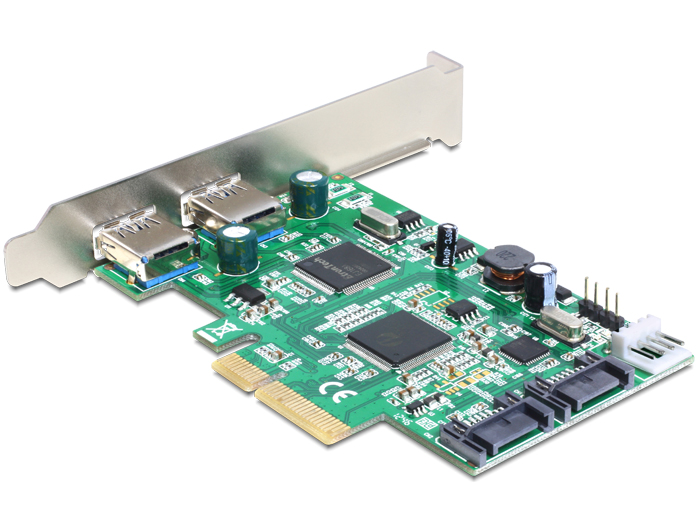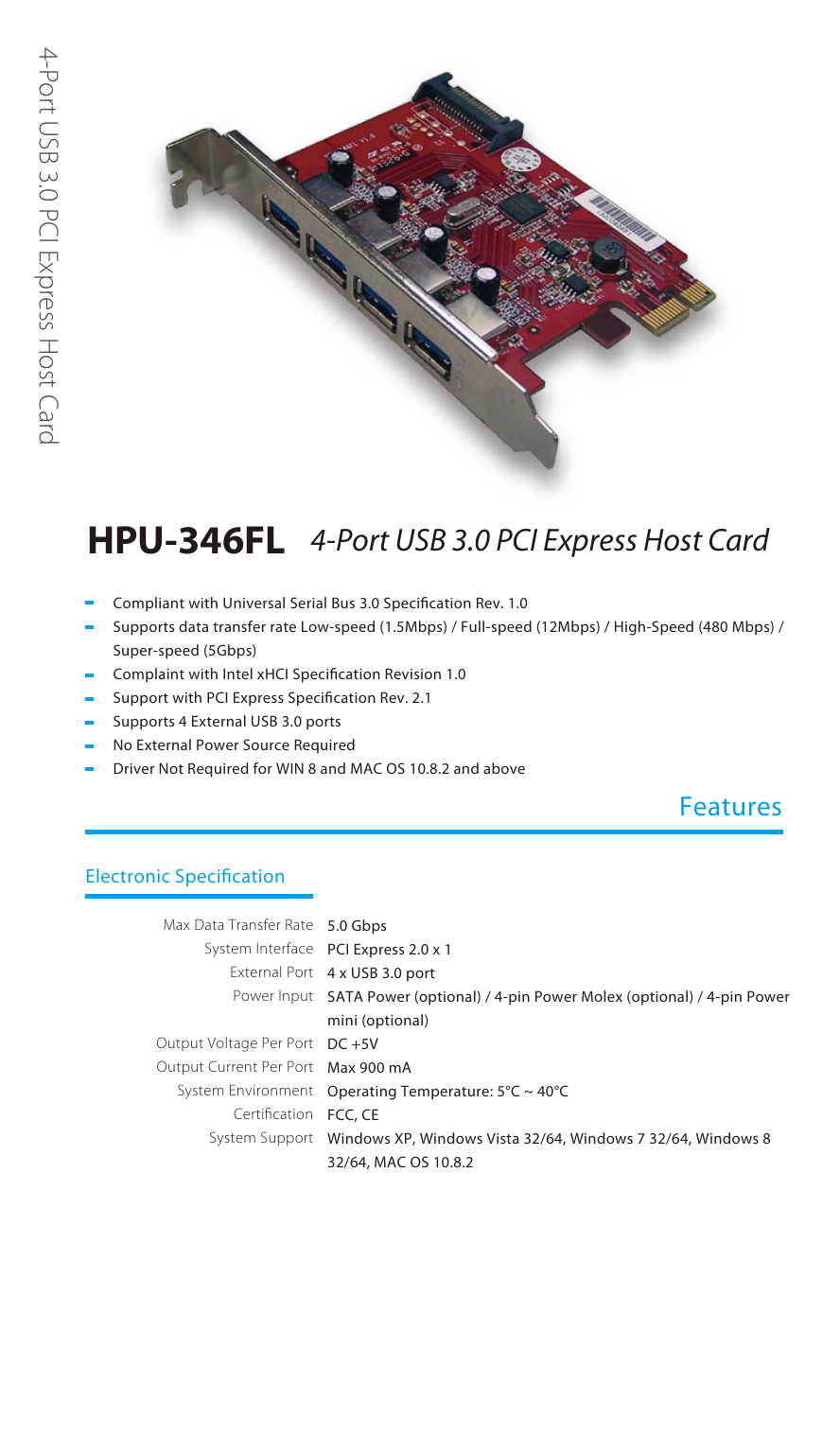
- 4 port usb 3.0 pci express card driver mac mac os#
- 4 port usb 3.0 pci express card driver mac pro#
- 4 port usb 3.0 pci express card driver mac windows#
You'll see read and write speeds of the HD itself and they should be a lot higher than 28 MB/sec. Again using Activity Monitor to check Disk Activity, find a reasonably large file, say 1GB or so, and duplicate it.
4 port usb 3.0 pci express card driver mac pro#
Richiegreener wrote.Any last thing to try before i send it back?Īgain thanks for your help, i don't know what I would have done without you.įirst, glad to help that's what Communities, aka forums, like this are all about, especially since a vast range of experience and experiences can be tapped (e.g., a chirping sound "from" a Mac Pro which was diagnosed as a failing HD among other things it turned out to be the UPS it was attached to's battery was dying and that was the UPS's way of saying so).Īnyway, while I can't imagine that your internal HD is that slow, there may be a way to test that. Unless, if their Express Card is anything like their PCIe card ( ), that might be the way to go, and that's who to get it from. The takeaway from that is sometimes, you can't get there from here. I spent 1 1/2 years trying to get a Sonnet card to work reliably and finally gave up and switched to the CalDigit. I mentioned I'm using a CalDigit USB 3.0 PCIe card. I haven't tried it myself and am no expert but I've read complaints and seen reviews showing a wide disparity among SSD's which you'd think would be the same. If it's installed by an Apple Store, you should probably be OK but if it's third party, there are issues which can create more trouble (and expense) than it's worth. I say likely because SSD's are still new and they aren't all created equal.
4 port usb 3.0 pci express card driver mac windows#
But in the process I learned that even when the external drive is formatted for a Mac, there's still an MBR (Master Boot Record) from its Windows heritage which appears to be needed for the drive to communicate with its enclosure partitioning and formatting doesn't get rid of it as long as it stays in its enclosure, but that shouldn't affect you.Īnyway, the drive in your MacBook Pro is a lot faster than the transfer speed you're getting (I'm sure you're using the USB 3.0 cable that came with the drive) so while an SSD would likely speed up your computer, it wouldn't speed up the transfer to the external. I'm no fan of Seagate, having been through three GoFlex 3TB externals, but the HD mechanisms were very good and worked well as long as they were removed from the unventilated enclosures and installed directly in a Mac Pro or in an enclosure with a fan. BTW, the Journaling is a kind of record which can help to reconstruct the drive's directory if the shutdown isn't clean (e.g., a power failure). Since the drive was really intended for Windows, I'd suggest doing the partitioning/formatting dance again. The external should be doing a lot better than the speed you're measuring. I think i am going to take my laptop in to get a SSD hard drive this week, do you think that would help the speed? It's a "Seagate Expansion Desktop Drive". If you don't know anything else i could do i will go ahead and reformat the drive with the "GUID" and journaled as you are talking about.Īnd yes the external hard drive i am using is usb 3.0. Also, if the drive is bus powered, it's probably portable, which means it likely has a HD inside that's similar to a laptop drive and probably no faster.īut in any case, it's the throughput that's measured by transfer rate as shown in Activity Monitor rather than how the connection is described in System Information that really matters. Since you have a power brick to use with the external, I'd suggest using it, at least for testing. An additional issue is that some externals expect to get all the power they need to operate from the USB connection itself, as you've mentioned. But they still should go faster than a USB 2.0 connection. You're correct that one contributing factor is the speed of the source drive and laptop drives often run at a slower rotational speed than desktop drives.


4 port usb 3.0 pci express card driver mac mac os#
If you're using the external drive only on a Mac, first partition it with a GUID partition, then format it Mac OS Extended (Journaled) - note that anything already on the drive would be erased when you do that. You'll see data read and data written speeds as well as the Peak transfer rate.

The most reliable way I know of to test transfer speed is to open Activity Monitor, click on Disk Activity at the bottom, then do a file transfer to the drive connected to the USB 3.0 port (I'm assuming the connected drive is a USB 3.0 drive because if it's not, all you'll get is USB 2.0 performance). am i getting the usb 2.0 speed because my main internal computer hard drive can't push out the information fast enough?

Wait is this one of those issues i am looking over.


 0 kommentar(er)
0 kommentar(er)
